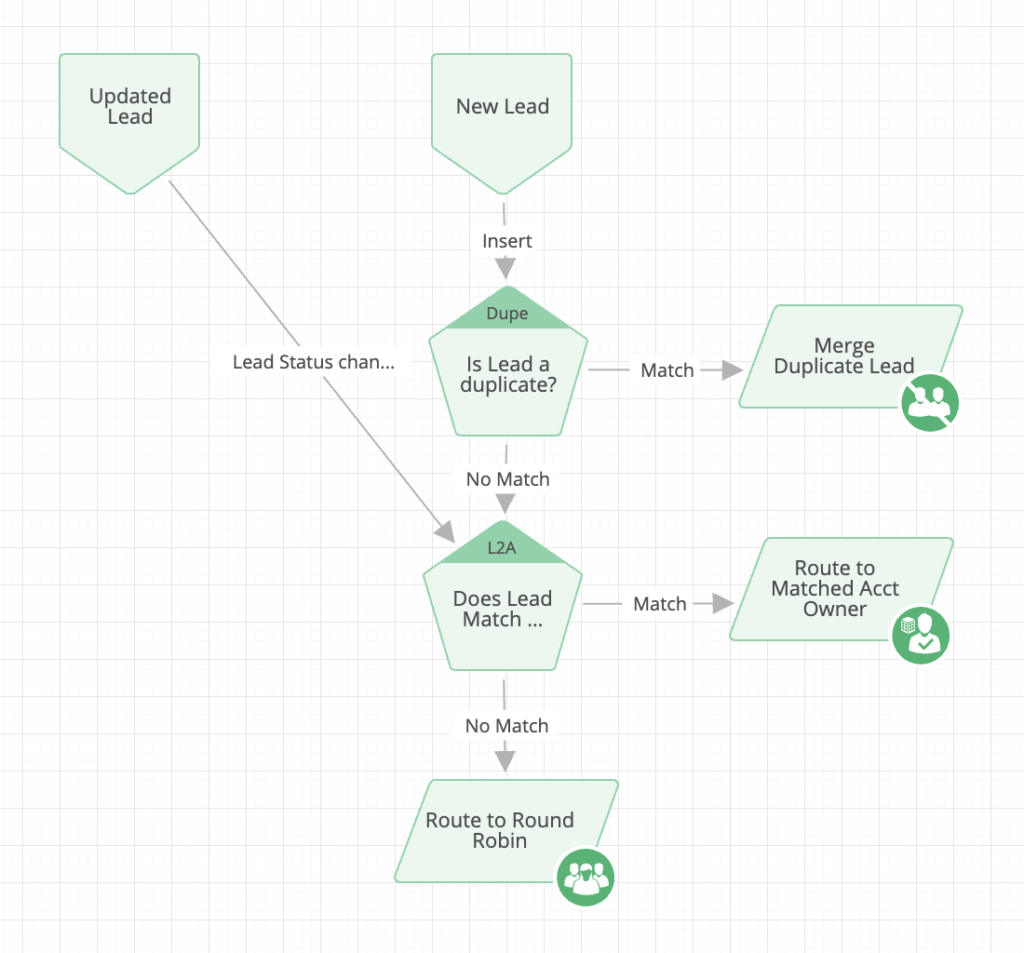Marketing, in both the B2B and B2C spaces, can be incredibly expensive. Regardless of a company’s stage of growth, it takes resources to raise brand awareness and develop brand interest, and you have to be accountable for results to ensure budgets are invested wisely.
One of the biggest concerns common to marketers across most every company is the handoff of Marketing leads to Sales. From the Marketing perspective, we know how expensive it was to capture the leads. What we don’t know is if leads are being followed up with in a timely and effective manner.
How can I ensure leads are followed up with?
Manual processes drain the efficiency out of go-to-market (GTM) motions across every function of the revenue team, particularly when you’re attempting to grow at scale. Moreover, manual processes tend to be routine, repetitive and somewhat tedious, and as such, they’re breeding grounds for human error. Simply, manual processes kill efficiency and effectiveness.
The very same automated lead management solutions that eliminate your manual tasks also address your biggest marketing dilemma – “How can I ensure my generated leads are followed up with?” The key is deploying a comprehensive solution complete with seamless integrations, timely alerts and notifications, and KPI-centric metrics and reporting.
Seamless integrations into your lead automation
Perhaps the best way to present seamless integrations is to provide a very high-level overview of a couple of different processes that are part of our LeanData GTM motions.
In the case of an inbound lead, we’ll quickly run the lead through LeanData lead-to-account matching to determine if there is a matching account in our Salesforce database. After all, I don’t want to route a lead from a customer account to Sales when the best place for it to route is to the correct customer success manager in Customer Success.
While LeanData Routing’s integration with ZoomInfo Enrich allows for enrichment at any stage of a process, we do it early, before assigning the lead to a member of the Sales team. When the lead then gets routed to the appropriate sales development representative, a Slack notification goes out and alerts the accountable individual. At the same time, an Outreach sequence is then initiated.
A parallel process involves leads already in the system who match to an account that surpasses the criteria to become qualified. We use 6sense to gather intent data, and once an account goes into the decision/purchasing stage and gets “6QA’d,” or becomes a “6sense Qualified Account,” it routes through a filtered round robin pool to get to the appropriate account executive.
Both processes are entirely automated, and as a Marketing Operations professional, I benefit greatly from having my automated routing solution seamlessly integrate with ZoomInfo, Slack, Outreach (SalesLoft, as well), and work hand-in-hand with 6sense. I’m confident that my hard-earned leads are routing to the correct sales representative, complete with all the contextual information that a rep needs to know in order to further advance the lead’s customer journey.
Timely alerts & notifications
Routing to the right representative at the right time, every time, is one thing. But, it’s not the only thing.
I need to know the rep knows there are leads queuing up that need her attention. The routing assignment solution already factors in filters like working hours and travel/vacation schedules, extraordinarily helpful considerations when using a round robin pool. So, I know the leads are routing to the best representative. But, how do I know that they know those leads are there?
Again, thanks to a seamless Slack integration, reps are notified immediately, and automatically, with an alert. I don’t need to send any notifications, and therefore I’m eliminated as a potential bottleneck in the process. Plus, the routing solution filters for load capacity and other factors, eliminating other potential bottlenecks.
I now know the reps are notified and aware. But, how can I determine if they’re taking action within our agreed upon service level agreement (SLA)?
KPI-centric metrics & reporting
Generally, an SLA is a contract defining how two organizations or teams will work together. Relative to revenue GTM teams, SLAs are usually multi-directional and typically detail how Sales will respond to Marketing-generated leads in order to achieve higher conversion rates. SLAs are built on specific, quantifiable goals, and document the commitment of each functional group to support one another and drive toward overall revenue goal attainment.
Every lead is not created equal, and therefore, every lead should not have the same SLA with regards to outreach and engagement. The hottest of all leads, demo requests, those self-identifying “hand raisers,” want to be contacted immediately, and best practice targets consolidate at around a five-minute SLA. Importantly, though, not every lead requires a five-minute lead response time.
For example, leads often download eBooks or register for webinars to better inform themselves with the resources you’ve already made available. It doesn’t make sense to contact them before they’ve had an opportunity to read the eBook or attend the webinar/watch the recording on-demand. More appropriate lead response times might be measured in hours or days, or relative to their accumulated lead score through 6sense or another lead qualification scoring methodology.
At LeanData, we have built-in tools in our industry-leading Routing solution to automate SLA accountability and track compliance. In building my GTM graphs, I can easily drag and drop nodes into my processes that hold leads from moving forward until very specific conditions are met. This functionality is critical for SLA compliance, as those conditions for movement include actions like holding a record until its lead status field has been changed (for example, after an SDR has actioned the lead), or feature a time-based component, holding a lead in the flow until an SLA time has elapsed, then immediately moving the lead to another rep, automatically notifying both the SDR and SDR manager.
Tools that add timestamps or hold records until specific conditions are met allow me to build time-based automations. When records receive a specific update or a defined time limit expires, my automated process decides what happens next. I can automatically reassign leads, send notifications and reminders about hot leads, or initiate automatic responses to prospects or customers.
Additionally, LeanData Routing allows me to track how long our processes are taking for each lead, and how quickly our Sales team is working those leads. “Hold Until” nodes in my graphs automatically track how long a record is waiting until it meets my specific predetermined conditions, and those same nodes also track whether or not our collectively defined SLA was met. Additionally, I customize the information recorded in my logs for better insight into any bottlenecks.
I’ve routed my leads correctly, ensured the reps are notified, and tracked the resolution of agreed upon SLAs. Now, I collaborate with my team to look at conversion rates and help determine if the “right” leads were acquired. But, that’s a post for another time!
Summary
One of the biggest concerns Demand Generation and Marketing Operations professionals have is ensuring the leads they’ve acquired are followed up upon effectively and in a timely manner. Automated processes are essential in facilitating lead management when attempting to do it at scale, and it provides a mechanism to ensure Marketing ROI is maximized.










